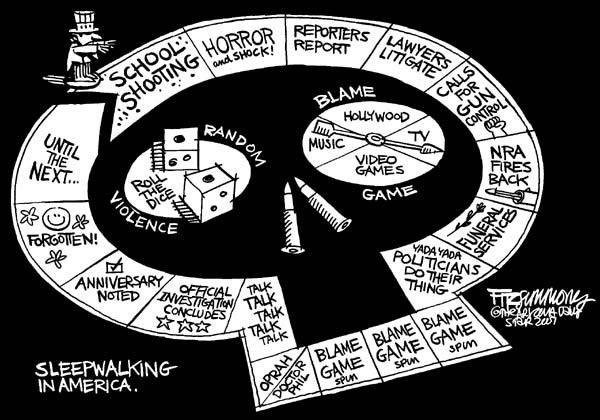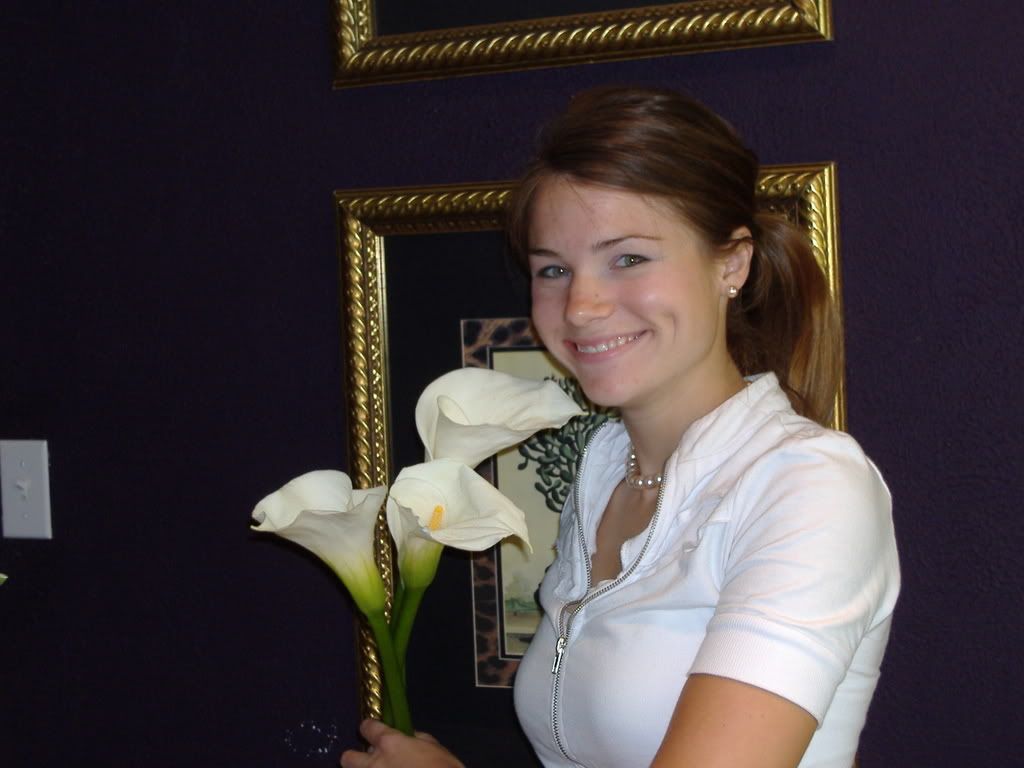Wednesday, May 9, 2007
Self-Reflective Essay
"Anthropologie does a great job at applying a central rule for website design taken from
the Adobe website. “Get to know your audience and design for them.” I am a firm
believer after having worked for the company for a while that it does indeed know its
audience and makes it a priority to design for them whether it is in the
store, catalog or
the website."(The Culture of "Anthro"). As it is easy to see the flow of the lines are very messed up and the post visually, without even reading it, lacked cohesion. I have learned the quirks of the blogging website and that my pieces need to be adapted to fit the site. Merely copying and pasting from a Word document did not suffice.
Another aspect of my writing that has changed a bit since the beginning of the semester is that this class at UCD has affected my writing outside of the classroom. I think this too has a lot to do with the fact that all of my writing has been done online which at this point in my life is very applicable. So much of what I do not only for this and other classes, but life in general, is online. A specific example of how this class has effected my life and writing outside of the classroom is that for our weekly posts, especially the free writes, I was much more aware and kept my eyes and ears open constantly for something I wanted to write about. One example of this was one of the more recent free writes that I posted about group work. I began my post by saying, "I am not sure why in every group I have ever been assigned to in school there is a person that seems to not care one bit whether he/she actually participates and contributes to the group?"(Group Work). I wanted an interesting topic to write about and as the assignments from week to week in this class evolved I found myself thinking about them in other classes and how I could apply them to my other classes as well. The quotation above on group work is in reference to the group I was working in for my Business and Professional Speaking class. Another way that this class has affected my life and more importantly my writing outside of the English classroom is with all of the other things that I have to do on the internet on a daily basis. Whether it is e-mailing, facebooking or online research, our posts that we have done in this class have made me much more conscientious of my writing and other activities online.
Finally, I would like to touch a bit more on how my writing has changed during the period of the semester. Outside of all of the things that I learned because of an online style for posts, I have learned much about different styles of writing. Prior to this class I had never written a rhetorical analysis in the formal sense of the term. Initially, it was a rather difficult task as it was something very new that I had never dealt with previously. However, I am grateful for the opportunity to have written this paper as it has broadened my idea of English class a bit. I am very used to many other styles of writing that it seems like every English class prior to this one utilized. It has been good to be introduced to something new so that as a writer I have been able to grow.
Wednesday, May 2, 2007
The School Shooting Board Game
 April 20, 1998 was a day most local Coloradans will not soon forget. It was the day Eric Harris and Dillon Klebold walked into the Littleton high school armed with guns, and bombs planted around the school. At the end of the horrific day at Columbine they had killed 13 of their peers, one teacher as well as themselves. They terrorized countless others. This was not the first incident of school violence ever to occur in the United States but one that opened many eyes in the nation. Since 1998 there have been several other incidents of school violence ranging from only threats, all the way to schools to deaths among students and teachers merely going about their daily business as students and teachers in the school environment. The most recent act of school violence happened when a young man in Virginia massacred 32 innocent victims on the Virginia Tech campus before killing himself. Each time something like this happens, the nation is in shock and attempts to figure out the reasons for what would make someone commit an act so terrible. The political cartoon entitled, “Sleepwalking in America” by Chris Cagle argues that in America today, these acts of school violence come and go in a trivial fashion, much like the nation is playing a board game, it is inevitable that these acts of violence will happen again, because the process never changes.
April 20, 1998 was a day most local Coloradans will not soon forget. It was the day Eric Harris and Dillon Klebold walked into the Littleton high school armed with guns, and bombs planted around the school. At the end of the horrific day at Columbine they had killed 13 of their peers, one teacher as well as themselves. They terrorized countless others. This was not the first incident of school violence ever to occur in the United States but one that opened many eyes in the nation. Since 1998 there have been several other incidents of school violence ranging from only threats, all the way to schools to deaths among students and teachers merely going about their daily business as students and teachers in the school environment. The most recent act of school violence happened when a young man in Virginia massacred 32 innocent victims on the Virginia Tech campus before killing himself. Each time something like this happens, the nation is in shock and attempts to figure out the reasons for what would make someone commit an act so terrible. The political cartoon entitled, “Sleepwalking in America” by Chris Cagle argues that in America today, these acts of school violence come and go in a trivial fashion, much like the nation is playing a board game, it is inevitable that these acts of violence will happen again, because the process never changes.
Cagle uses logical appeals by stating with text, as well as visually, to make his argument that the school violence is a vicious cycle that seems to take on the same characteristics each time one happens, only until the next comes along. From a surface level argument, each piece to the game board is a different thing that happens in our nation whenever a school shooting hits the headlines. The first thing that happens according to Cagle’s cartoon is that the nation is in “horror and shock”, then the “reporters report” while everyone sits in front of the television or computer screen to hear about the progress of the story. “In the year following the massacre at Columbine High School, the nation’s fifty largest newspapers printed nearly 10,000 stories related to the event and its aftermath, averaging about one story per newspaper every other day”(Newman, 49). The “reporters reporting” is a huge aspect to these incidents as was noticed with the latest VT Massacre as well. NBC received a letter as well as a video from the killer and put the pictures on the news. This was a cause of much anger on the part of the American public but more so those affected by the shooting. It is the act of the reporters to either tell the truth or feed the public propaganda to get ratings up. Cagle also employs other squares on the game such as “NRA fires back”, “Yada Yada, Politicians do their thing”, “anniversary noted” and finally a space that says “forgotten” until the next. We are all so familiar with all of these terms, which sadly are a reality and have been the cycle that we have seen each time there is another incident. It is all just one big game that the nation plays over and over again.
Cagle also uses visual images to make the logical appeals more vivid. He uses the idea of analogy very strongly in his appeals, making the analogy that the events of these school shootings have become just like a board game for all involved. Visually, there is no color in the cartoon but rather just a round object, which makes the game board in the shape of a skull. It never appears to have a definite stopping point because it is round. This in itself makes an argument that there is no end in sight. The cycle goes around in circles and begins in the same place where it is left off. Cagle also uses the visual aids of dice, a spinner and bullets that appear to be the game pieces. These are all trivial aspects to the game. One rolls the dice and does not know what will be landed on. The person spins the spinner and it is a hit or miss as to who or what is to blame; the music, T.V., Hollywood or video games, there is never a definite answer after a shooting, which is what the use of the spinner conveys. The final piece of the game board has a smiley face and stars on it. This is the piece that says, “forgotten”. These visual pieces contribute to the logical argument but also lead one to Cagle’s appeal to pathos.
The emotional appeals of the text are probably the strongest appeals that Cagle enforces. He uses these horrific events of school shootings as being analogous to a trivial board game. This is meant to strike a chord emotionally with the audience. The smiley face at the end, as mentioned above, acts to make the entire thing okay. It is all over, the anniversary has been noted and everyone can now forget about the entire event. Publishing this cartoon directly after the VT Massacre makes one think about how all of the others like this have ended up. After enough time everyone can just move on and forget until the earth is shaken with another tragedy. In the direct aftermath of the Massacre, seeing all of the brokenness of the families, all of the loss of life and the truly insane act that happened makes one not want to forget. It makes one emotionally attached to the victims and their families and makes the world realize how fragile we are as a people. Do we really want this to happen again? Do we want to forget and remain in this vicious cycle, or do we want to change the game?
Cagle appeals to the ethos of the audience, which is mostly the American public, by using the ethical issues that are in the forefront of everyone’s minds in the aftermath of these tragedies. One of the first issues that is always debated is the NRA wanting to maintain the right to bear arms against those who want tighter laws for gun control. There are always arguments for both sides of the coin with these issues but ethically does it ever help the country one way or the other? Perhaps it is the not the guns at all or the items on the blame spinner; Hollywood, T.V., video games or music, as all of these things have been pointed to before and still nothing has changed. Perhaps it is the ethical responsibility for human beings to treat one another like human beings. Cagle is suggesting the audience go beyond this “blame game” and do something that will affect people who clearly are lacking a sense of being loved in this world, to be respectful of other lives that we are sharing the earth with.
These issues of school shootings are not just a game to be played. There is no dice to roll or spinner to spin to decide whom to blame or what space to land on. Rather, Cagle is arguing that this in fact is what the nation does each time a school shooting happens and that it is all now very trivial. He uses many rhetorical appeals to logos, pathos as well as ethos to make his argument. Cagle’s cartoon truly makes one think whether anything will ever change in how these shootings are dealt with, or is it a trivial game that continues to be played over and over again?
Works Cited:
Newman, Katherine. Rampage: The Social Roots of School Shootings. New York:
Perseus Books Group, 2004. pgs 3-49.
Friday, April 20, 2007
Group Work

Wednesday, April 11, 2007
Sunday, April 8, 2007
Jo Chemo, Spoof Ad

Most everyone in this culture is familiar with the animated camel better know as "JO Camel", the advertising technique used by Camel cigarettes. Why a camel? I really do not know why this is the choice of the marketing directors at Camel cigarettes but it has been a rather affective one in that everyone knows "JO".
This ad is a spoof on the Camel ads and shows all of the camels in the hospital on Chemo because all of the cigarettes they have been smoking have given them cancer.
This ad utilizes a few very clear rhetorical strategies. The first that seems to be the most obvious is the us of cause and effect. It demonstrates how the use of Camel cigarettes are often times the cause of cancer thus making patients require the use of Chemo for survival. This is the biggest strategy of the add that appeals to the pathos of the audience. It is in many ways a very comical ad but appeals to a very serious situation. Most people have at one time or another been a smoker, known someone that smokes or at least are around a smoker every so often. Most people have felt the effects of smoking, whether it be as drastic as actually having cancer or not. Nonetheless, there are not many positive effects to smoking. This appeals to pathos as people can relate emotionally to the consequences of smoking.
Finally, this ad uses the original Camel ads as a social commentary in a huge way. As I mentioned before, most Americans are familiar with "Jo Camel" which allows the people who see this ad to understand its message. If this ad were in another country where Camel cigarettes were not sold there would be a disconnect to where the people would have a very difficult time understanding the advertisement.
Calvin Klein Ad

This add, taken from the Unofficial Calvin Klein Ads Archive shows two women with what appears to be a couple of guys behind them. The women are dressed very modestly with clothing that is fully covering their figures. The sex appeal is this ad is very different than the sex appeal that one would see in most advertisements today. This picture is from the nineties judging by the appearance of the clothes although the actual year of the picture is unknown. The clothing is very flattering yet not immodest and does not compromise the dignity of the ladies in the picture.
While viewing several of the pictures on the Calvin Klein website, it is interesting to see the progression of the clothing even from just ten or fifteen years ago. It would appear that more often than not the models become more seductive with fewer clothes on their bodies as the years progress. The use of sex appeal is very much a temporal idea which makes me wonder what advertisements will look like in another ten years?
I find this ad to be effective even without the blunt use of sex appeal. I also find it to be quite appropriate to all eyes of all ages. However, in regards to some of the other advertisements, I cannot say the same.
I think that this ad appeals to pathos in several ways. It is interesting to see that although quite modestly dressed the ladies still have guys standing behind them. This would appeal to emotion and make a person think that even though the women are dressed modestly it does not make them ugly or undesirable. They are beautiful with all of their clothes on which would appeal to the emotion of women whose mind set tends to be the opposite.
Sunday, April 1, 2007
Analysis

